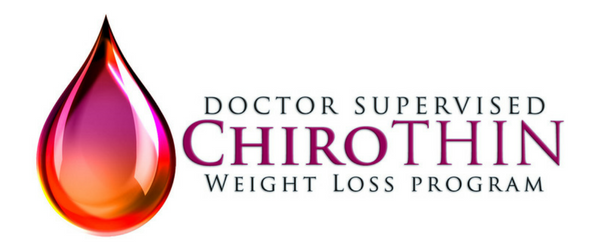
If you’re always tired and moody, you may be experiencing a hormonal imbalance. The good news is that you’re not alone. 80% of women struggle with hormonal imbalance, resulting in symptoms like fatigue, anxiety, and unexplained weight gain.
Some women also experience irregular periods. Hormonal imbalance can go both ways – you may have too much of one hormone or too little. Fortunately, you don’t need to make drastic changes to your lifestyle.
Small changes to your diet can do wonders for your endocrine system. This article covers five tips for formulating a hormone-balancing diet. Read on to discover more.
1. Eat More Protein
Protein is a powerhouse in providing endocrine system support. Your body thrives on amino acids but is incapable of producing them alone. Your endocrine glands need protein to produce specific hormones.
This includes insulin, estrogen, and the thyroid hormone. These hormones help regulate your appetite, stress, metabolism, and reproduction.
The human body has a way of telling us when it needs something. If you’re not getting enough protein, you might always feel hungry or crave salty or sweet snacks. A protein deficiency could also result in problems with your hair, skin, and nails.
However, your protein needs may differ depending on your needs. Some protein sources, like beef and grains, can overstimulate your body’s immune system. This can result in inflammation.
Lean meat, like chicken breasts, is a good source of protein. However, you can also fulfill your protein requirements with eggs, Greek yogurt, and peanut butter.
2. Taste the Rainbow
Changing your diet completely can feel like a daunting task. It can be difficult to think about switching your meats when you can’t even decide what to eat for dinner. The Rainbow Diet is a great way to transition to a hormone-balancing diet.
The Rainbow Diet consists of eating different colors of food according to the colors of the rainbow. You can eat these as a snack or add them as an ingredient to your regular meals.
For example, if you’re on color red, you will need to eat red food. If you’re on the color green, you will need to add green food. This is a fun way to maximize your intake of essential nutrients and fix your relationship with food.
Here are some examples for every color:
- Red: Tomatoes, grapefruit, apples, watermelon, and strawberries
- Orange and Yellow: Squash, pumpkins, carrots, pineapple, bananas, and corn
- Green: broccoli, spinach, kale, cabbage
- Blue and purple eggplant, grapes, blueberries, and blackberries
- White and brown potatoes, garlic, leeks, onions, and mushrooms
Once you’re ready for a bigger change, you can incorporate the Rainbow Diet into your daily meals. Instead of adding foods from one color each day, you can add the entire rainbow to each meal.
3. Fuel Your Workout
Hormone-balancing diets work best when paired with regular exercise. Exercise helps to rebalance hormone levels by promoting the production of dopamine and serotonin. Your estrogen and testosterone levels may also benefit from regular exercise.
However, to get the most out of your workout, you need to fuel your body properly. Exercising on an empty stomach causes you to burn valuable energy instead of using it in the right avenues. Not only will you be less efficient, but you’ll also feel dizzy and lethargic due to a drop in blood sugar levels.
If you’re hoping to lose weight, eating on an empty stomach can hinder you from doing so. Eating the right foods before your workout can make a huge difference to your fitness goals. You’ll have more energy, and your body will be more capable of balancing your hormones.
You can opt for a protein shake or a healthy snack, like a banana and a peanut butter sandwich. Fresh fruit with chia seeds is another great option.
4. Supplement Your Diet
More than two billion people in the world are deficient in key vitamins like vitamin A, iron, and zinc. While changing your diet can help, supplements are a more efficient way to fill those voids in your nutrition. Here are some essential vitamins you need to pay attention to:
Magnesium
Magnesium plays a vital role in balancing thyroid hormones. However, it is also essential in balancing the nervous system, blood sugar levels, and insulin. Under stress, a magnesium deficiency could cause your stress hormones to go haywire.
Vitamin D
Vitamin D acts as a precursor to hormones. Your body relies on vitamin D to create calcitriol, which affects hormonal balance. If you’re deficient in vitamin D, you may experience symptoms like fatigue, depression, and brain fog.
B Vitamins
B vitamins, like vitamins B3, B6, and B12, are crucial to endocrine health. A vitamin B12 deficiency could lead to an imbalance in your estrogen levels. This can manifest as mood swings, fatigue, and increased inflammation.
Vitamin B3 supports healthy liver function. It suppresses inflammation and improves blood circulation in the body.
5. Load Up on Probiotics
Did you know that your gut has its own microbiome? Yes, you heard that right. The human stomach contains trillions of bacteria that can be both healthy and harmful.
The good bacteria in your gut, also known as microbiota, provide immune and endocrine support. They break down toxic foods and help your body absorb all those good nutrients.
This promotes the production of hormones like insulin, leptin, and ghrelin. These hormones help strengthen the lining in your gut, further helping to balance your hormones.
Loading up on probiotics helps support the friendly bacteria in your gut. Probiotics are available in the form of supplements, buttermilk, and bone broth.
Establish a Hormone-Balancing Diet Today
Hormonal imbalance is more common than you think and can affect people in different ways. Insomnia, depression, mood swings, and unexplained weight gain are only some examples. A hormone-balancing diet can help restore and optimize your health.
Are you ready to take control of your lifestyle and greet a healthier and happier you? ChiroThin can help push your body back into alignment, tackling issues like hormonal imbalance. Find a ChiroThin doctor to learn more about our program.
